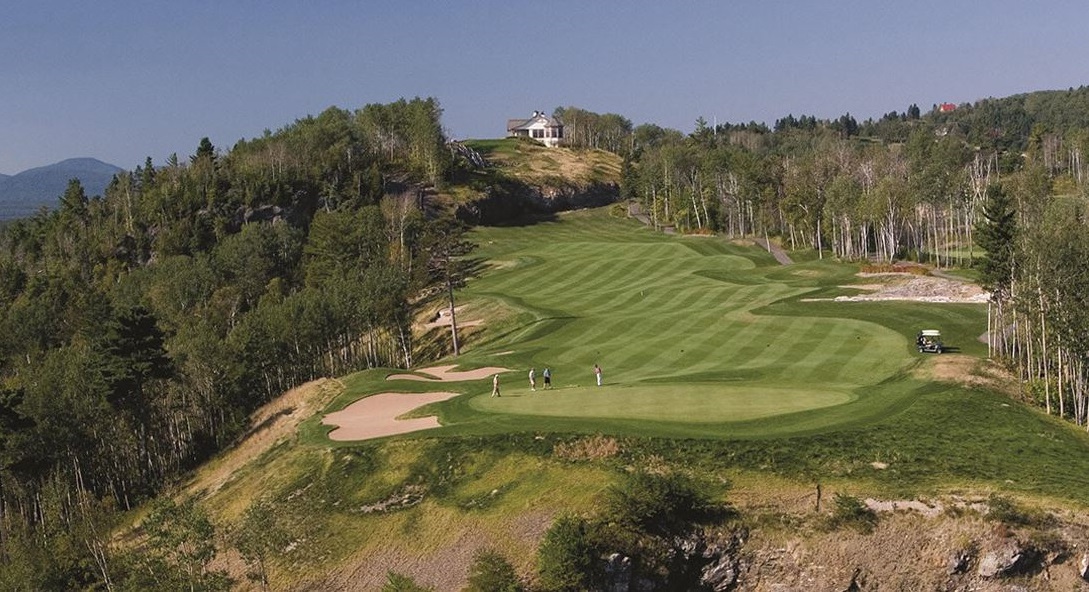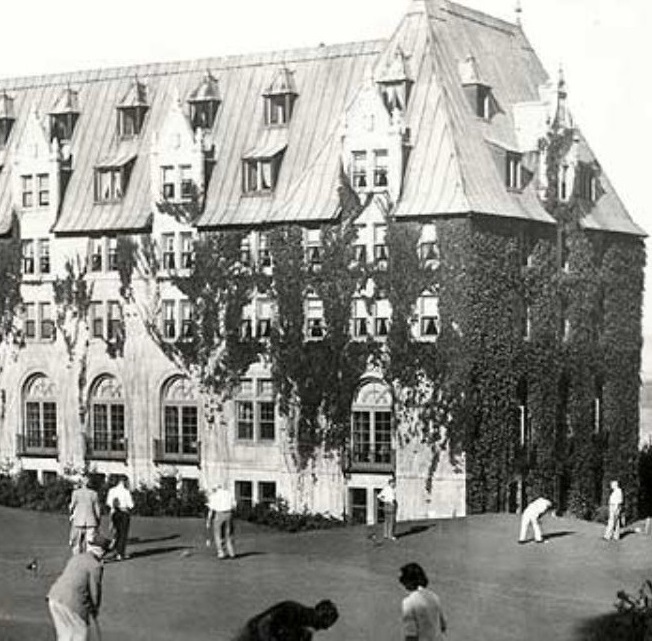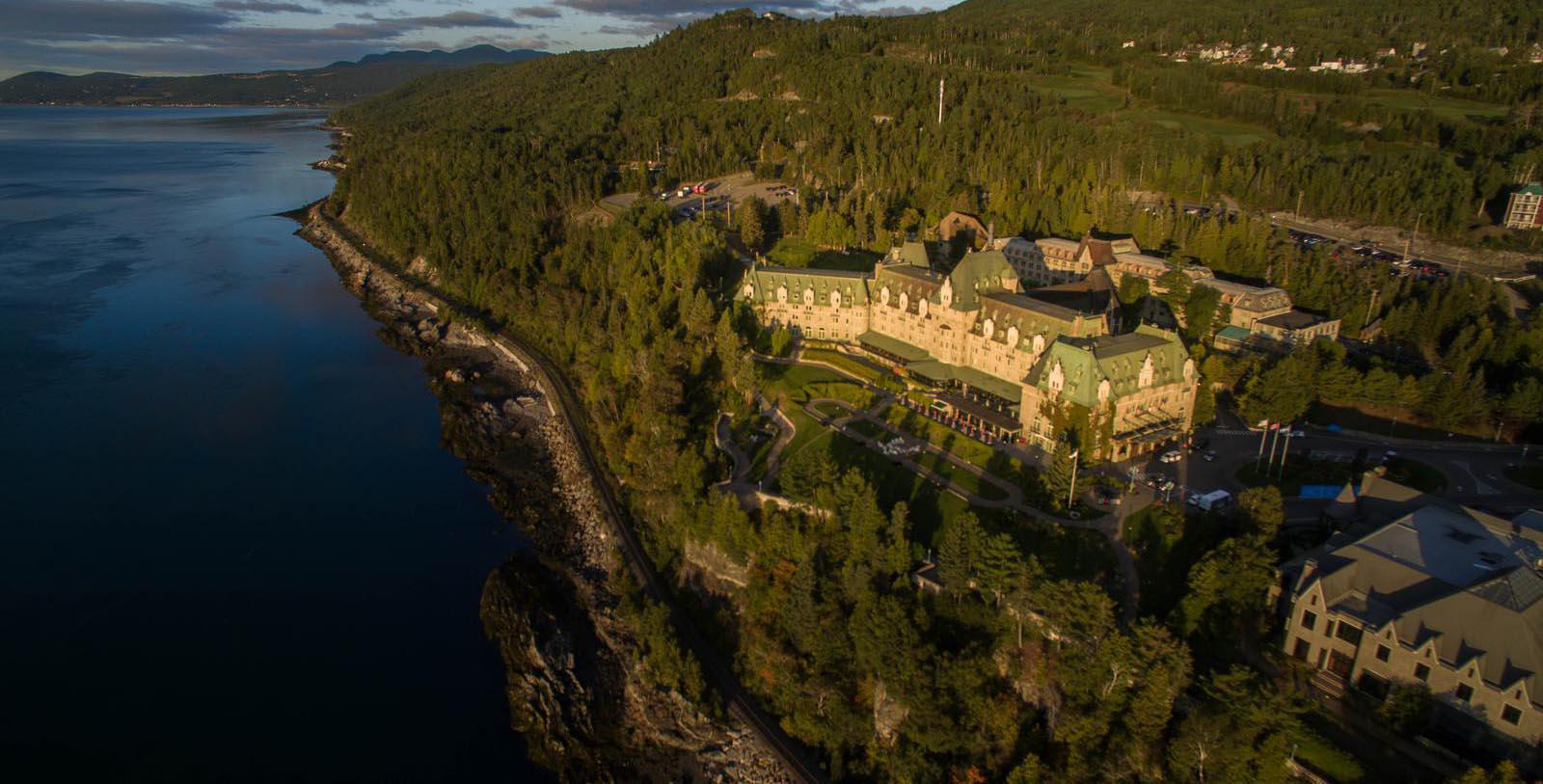Receive for Free - Discover & Explore eNewsletter monthly with advance notice of special offers, packages, and insider savings from 10% - 30% off Best Available Rates at selected hotels.
golf
Discover the Club de Golf Le Manoir Richelieu, which was originally designed by renowned British professional golfer Herbert Strong.
At the beginning of the 20th century, the Fairmont Le Manoir Richelieu had emerged as one of Canada’s most exclusive vacation retreats. Indeed, its pristine location overlooking the scenic Malbaie Bay had made the luxurious resort an attractive spot for avid outdoorsmen and nature sightseers from all over North America. The destination subsequently gave its original owner—the Richelieu and Ontario Navigation Company—a considerable annual profit, enabling the corporation to buyout its competitors. As such, the Richelieu and Ontario Navigation Company had eventually morphed into the much larger “Canada Steamship Lines” just before the outbreak of World War I. Under its watch, Canada Steamship Lines proceeded to initiate an extensive series of renovations to further capitalize upon the resort’s ever growing popularity. Among the projects that the company began was the creation of a magnificent golf course, designed by British golfer Herbert Strong. (Strong himself was an accomplished professional competitor, having finished 9th at the 19th U.S. Open in 1913.) Canada Steamship Lines had specifically requested that Strong construct a collection of 18 fairways that could accentuate the verdant landscape that surrounded the resort. Strong did not disappoint, manufacturing two different sets of picturesque holes known today as the “Richelieu” and “Tadoussac” nines. Both courses succeeded in showcasing the natural beauty of the area, offering unrivaled views of the majestic St. Lawrence River nearby.
After months of continuous construction, Strong’s course made its much-anticipated debut as the new “Club de Golf Le Manoir Richelieu” in 1925. It quickly earned a considerable reputation due to its luxurious character, with former U.S. President (and then Chief Justice of the U.S. Supreme Court) William Howard Taft presiding over its opening festivities. In the years since its grand opening, the Club de Golf Le Manoir Richelieu continues to be a celebrated place to experience a memorable round of golf. In fact, the facility even received the coveted destination of “Canada’s Golf Course of the Year” during the early 2000s. More recently in 2002, the Club de Golf Le Manoir Richelieu underwent a massive renovation that sought to further enhance its luxurious appeal. Overseen by renowned golf course architect Darrell Huxham, much of the construction was devoted to restoring the historical character of the Richelieu and Tadoussac courses. Huxham also developed a brand-new set of nine holes collectively called the “St. Laurent,” which offered breathtaking waterfront views. Contemporary guests will appreciate the work that Huxham achieved, especially the altering levels of difficulty he instituted into the format. For instance, the very first fairway on the St. Laurent course is incredibly wide, making it easier for golfers to reach the green regardless of their skill. But once the green comes into sight, players on the course will realize that embracing a conservative strategy will pay off—the end of the course is covered by no less than 14 bunkers that have been placed purposefully to encourage shorter, more cautious drives.
-
About the Location +
While the current town of La Malbaie did not formally appear in the late 1990s, its history harkens all the way back to the mid-18th century. The first settlers to arrive in the area were two British Army officers: John Nairne and Malcolm Fraser. Nairne and Fraser had served with distinction in the French and Indian War, having played a significant role in capturing the cities of Québec City and Louisbourg at the height of the conflict. Due to their lack of economic prospects in their native Scotland, the men decided to acquire land in an unpopulated part of Upper Québec at the confluence of the Malbaie and St. Lawrence Rivers. The British Crown eventually awarded their claim in 1761, granting Nairne the western shore of the Malbaie River and Fraser the eastern side. As such, Nairne’s settlement became known as the Seignory of La Malbaie, while Fraser’s was designated as the Seignory of Mount Murray. But they also informally renamed the entire river—as well as its accompanying bay—after General John Murray, who had served alongside the two men in the French and Indian War. Smaller communities then quickly formed around the area, such as the Parish of Saint-Étienne in 1774. The inhabitants eventually made several attempts to incorporate the entire area into one community over the next several decades, forming at various points the Municipality of La Malbaie and the Municipality of Saint-Étienne-de-Murray-Bay. Then in the late 1890s, the village of La Malbaie—the former center of the Seignory of La Malbaie—seceded and became its own political entity known as the Village Municipality of La Malbaie.
It was around this time that the historically powerful Taft family of Ohio established a beautiful summer home along the Malbaie River. The most prominent member of the family to frequent the location was William Howard Taft, who would become President of the United States, as well as a Chief Justice of the Supreme Court. Taft was beloved throughout the community, as the natives took to affectionately calling him as “le petit juge.” Many lifted their caps to him as he passed them on the street and featured his visage in dozens of local plays. They even held a large candle-light vigil upon learning of his death in 1930. The Municipality of Saint-Étienne-de-Murray-Bay eventually became known as Saint-Etienne-de-la-Malbaie in 1957. Meanwhile, the neighboring Village Municipality of La Malbaie changed its own designation to that of a town, formally becoming the town of La Malbaie in 1958. The town of La Malbaie gradually absorbed the surrounding communities throughout the remainder of the 20th century, culminating with the merger between the town of La Malbaie and the neighboring settlements of Rivière-Malbaie, Saint-Fidèle, Cap-à-l'Aigle, Sainte-Agnès, and Pointe-au-Pic in 1999. Today, the town of La Malbaie is among the most exciting destinations in Québec’s Charlevoix region. Located a couple hours north of Québec City, the area today is celebrated for its competitive fishing, delicious cuisine, and tranquil ambiance. Charlevoix itself was designated as a UNESCO World Biosphere in 1989, due to its rich wildlife and picturesque geography. Few places are better for a relaxing vacation in all of Québec than the town of La Malbaie.
-
About the Architect +
Herbert Strong: The architect who left the largest influence on the Club de Golf Le Manoir Richelieu was British professional golfer Herbert Strong. Originally from southeast England, Strong first became involved with golf when he worked as a young caddie at the Royal St George’s Golf Club. He then began competing in numerous tournaments throughout the United Kingdom, playing in the British Open as an amateur in 1899. Turning pro four years later, he proceeded to enter two more British Opens in 1903 and 1904. Despite his enthusiasm for the sport, Strong never managed to finish high in the tournament—he was often cut before the final round. Nevertheless, he had developed a considerable reputation by the time he immigrated to the United States in 1905. Settling outside of New York City, Strong easily parlayed a position as the club professional for The Apawamis Club. He subsequently fulfilled a variety of responsibilities in that position, including landscape maintenance to fairway design. Strong moved over to the Inwood Country Club not long thereafter, which he remodeled thoroughly for years.
Word soon spread of his work at both The Apawamis Club and the Inwood Country Club, inspiring many other golf course superintendents to request his help. Strong thus began to either build or reconstruct numerous golf courses across North America over the next several decades. Among the best courses that Strong had crafted was the renowned Engineers Country Club, which fellow colleagues had hailed as an engineering masterpiece. Every course Strong made managed to enthrall its guests through their use of the natural landscape, as well as a challenging mixture of hazards and sloping terrain. While Strong remained engrossed in golf course architecture for the rest of his life, he affected the sport in other ways, too. He continued to play golf competitively, finishing 9th overall at the 1913 U.S. Open. Strong was even invited to serve as the first Secretary-Treasurer for the Professional Golfers’ Association of America by Rodman Wanamaker after the latter had orchestrated its creation during World War I. As such, when Strong died years later in 1944, many of his colleagues fondly remembered him for the profound impact he had on the world of golf.





























